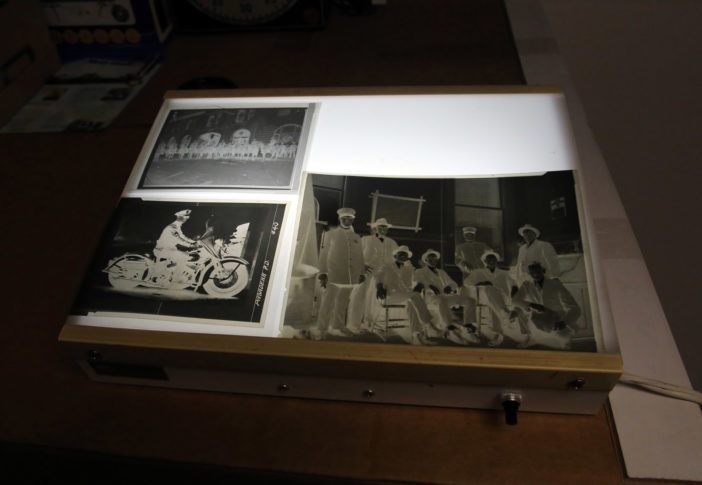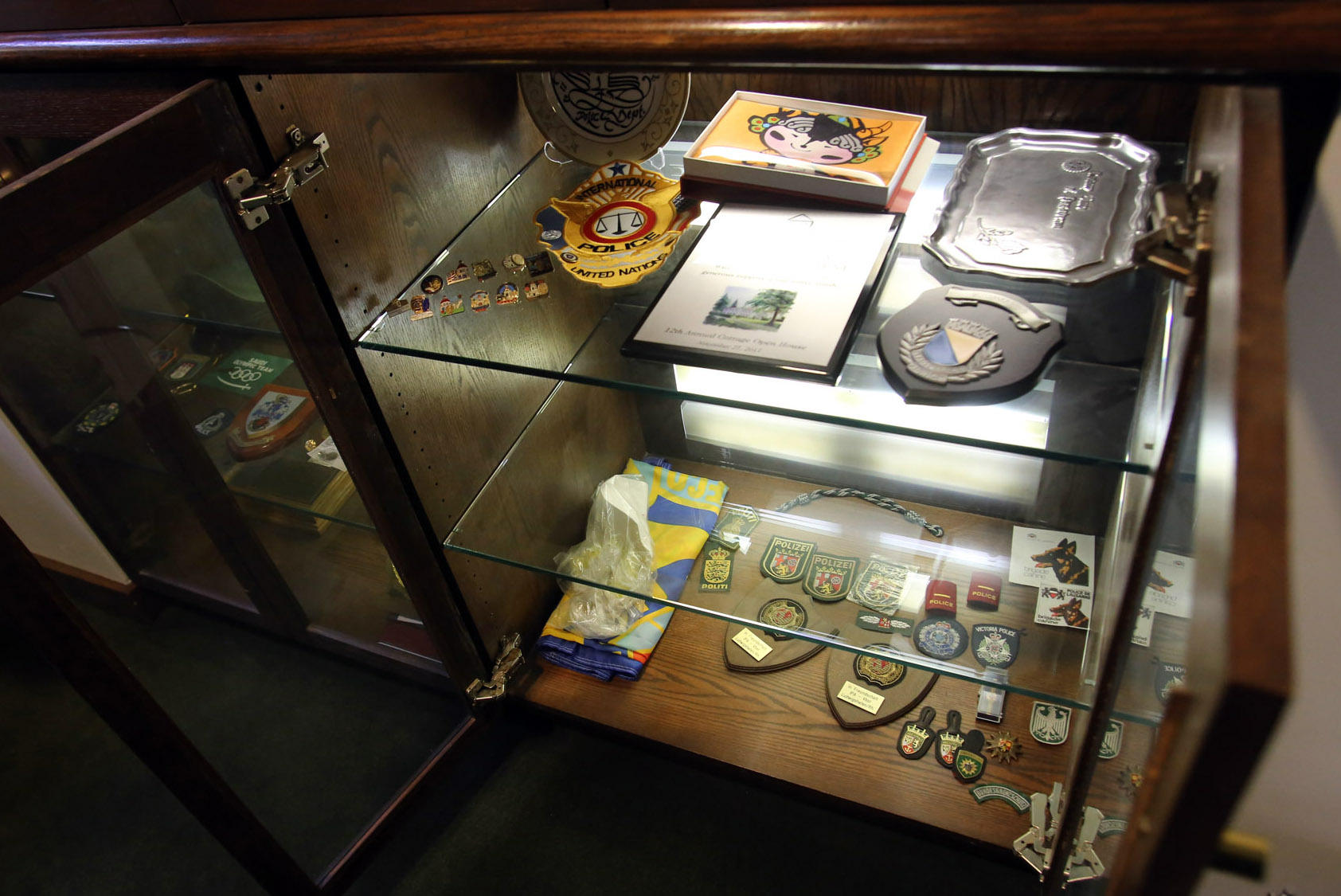An 88-year old gun belt and holster is displayed on a table in an upstairs office at the Pasadena Police Department.
Laid out alongside it are old pair of handcuffs, a set of brass knuckles – once standard issue to police officers – scale models of PPD patrol vehicles going back more than a half-century and a sealed evidence Baggie, dated 9-15-83, containing a pair of sunglasses worn by a serial robber in all of his heists.
Vintage badges, weapons, photos, yellowing newspaper clippings, plaques, arm patches and other memorabilia, all with a connection to Pasadena PD, are scattered throughout the Garfield Avenue station.
Some of the relics are on display, but not in public view, while others are stored away in desks and file cabinets.
Together, they tell an ongoing story of a department that began in 1886.
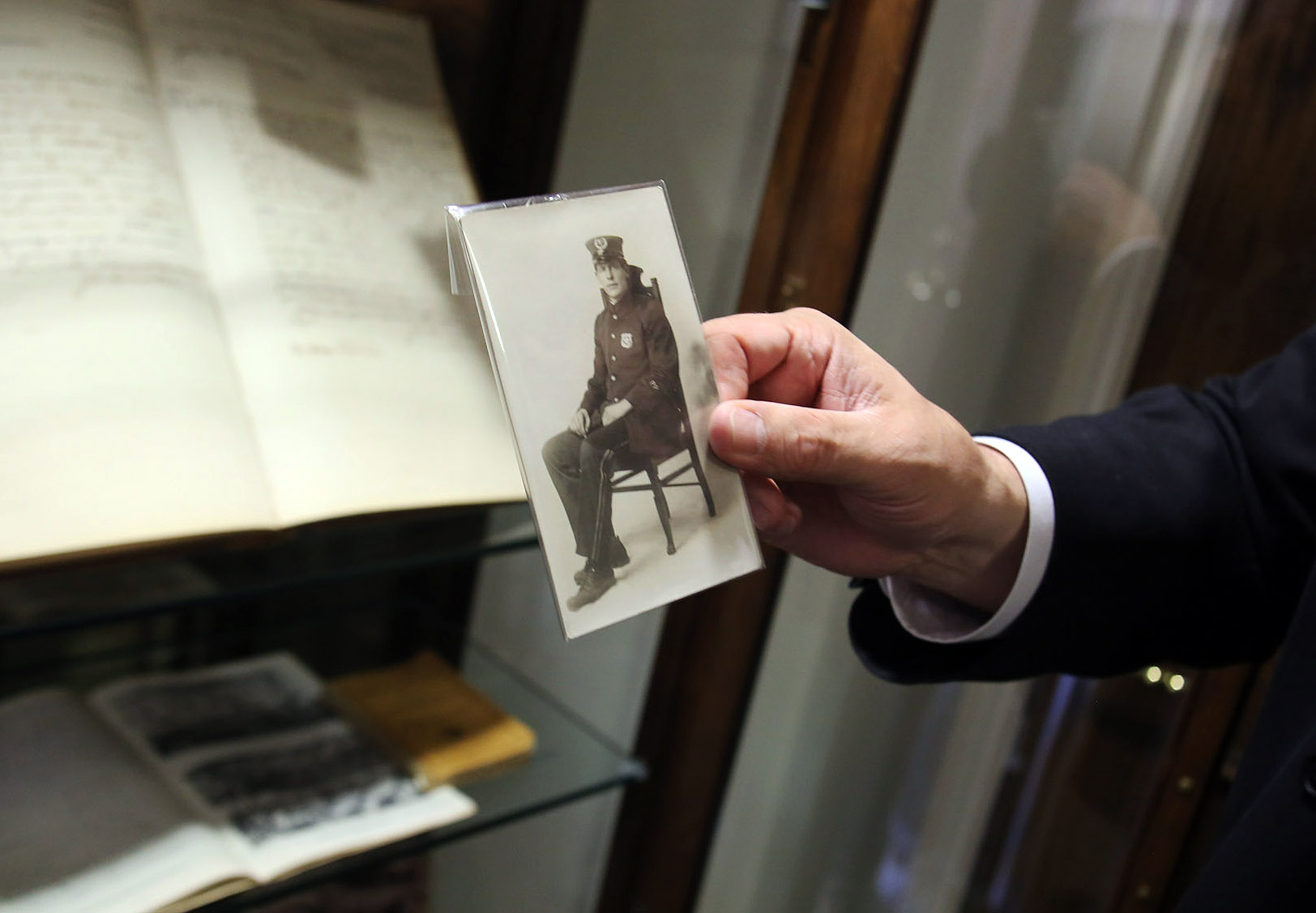
Lt. Jason Clawson holds a photograph of an unidentified Pasadena Police officer taken in the early 1900’s. / Photos by James Carbone
With plans in place to construct a Pasadena PD museum in the station’s main lobby, the public will soon get the chance to embrace the department’s history for themselves.
But before that can happen, Lt. Clawson and Cpl. Victor Cass have the major task of sifting through hundreds, maybe thousands of items to decide which items will be displayed and how the museum will be organized.
“We want to showcase the history of the PD and the good work the police are doing,” said Jason Clawson, a 28-year Pasadena PD veteran who serves as the adjunct to Chief John Perez “Once we figure out what the goods are that we have, what is the best of the best and what do we want to display … There is cool stuff, cool designs and cool meanings to stuff.”
Other memorabilia includes a framed letter dated April 3, 1930 praising the arrest of a bootlegger and signed by then Pasadena PD Chief Charles H. Kelley.
A framed casefile showcasing the arrest of an auto theft ring in 1935, which includes mug shots of three arrestees and photos of the equipment used to steal vehicles.
And a collection of prototypes of every badge worn by the PPD throughout their 133-year history.
Clawson hopes to have the museum open by May, but an opening date has not yet been finalized.
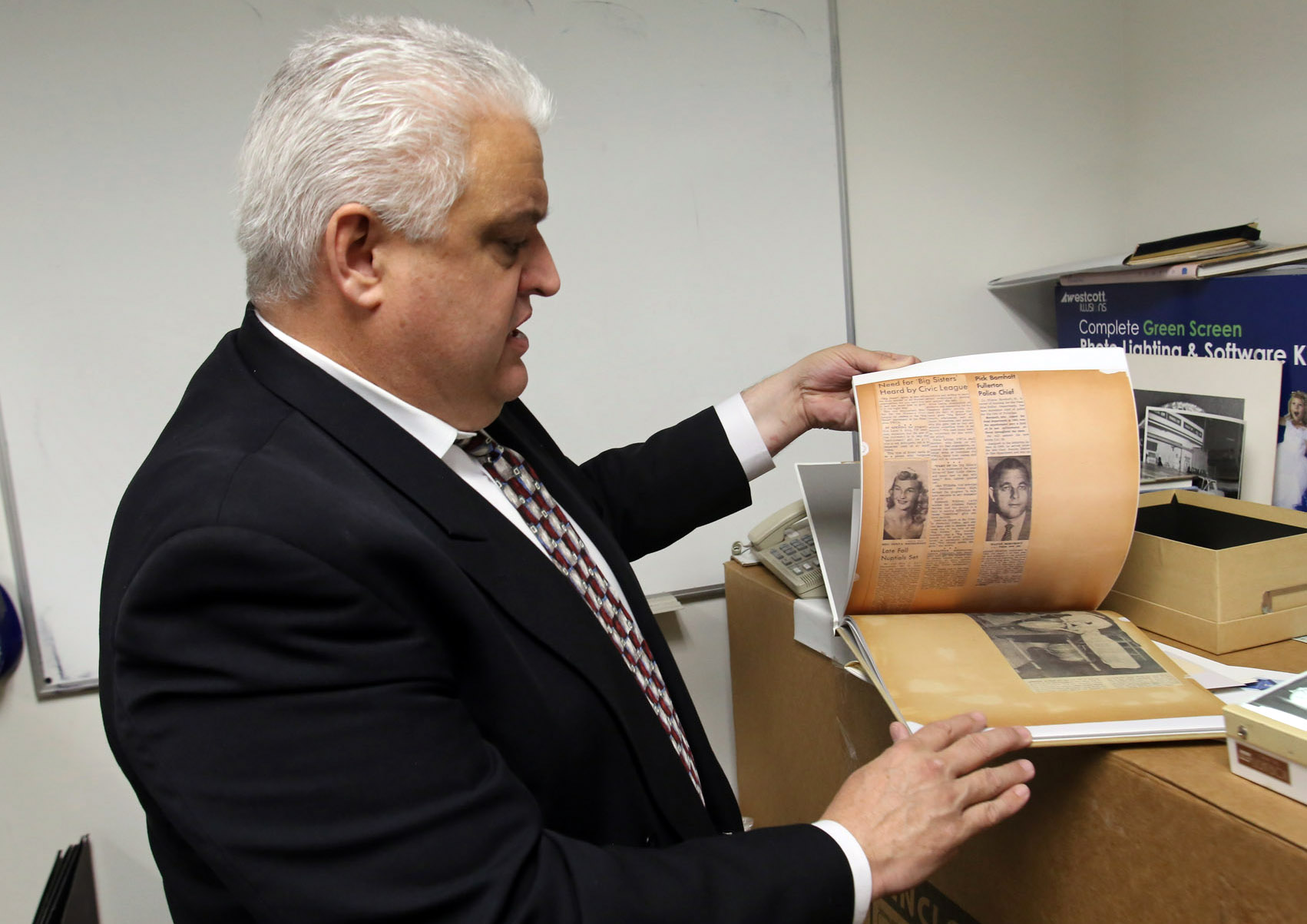
Lt. Jason Clawson looks through archive articles of the Pasadena Police Department that will be used for the Pasadena Police Department museum. Clawson is cited, “Let’s not forget our history.” /Photos by James Carbone
In the meantime, a committee made up of PPD employees is being formed to collaborate on specifics such as funding for the museum, how the museum will be laid out and visiting other local museums to find best practices for Pasadena, Clawson said.
Cass, a 26-year Pasadena PD veteran and Pasadena resident for most of his life, became an expert in the agency’s history 20 years ago when then Chief Bernard Melekian tasked him with writing a book chronicling the agency’s history from 1887 to 2000.
“I really dug deep,” said Cass, a decorated detective and who authored of three novels in addition the Pasadena PD history book… “The tragic stories, the heroic stories, the scandals, the shocking trials that stunned Pasadena at the time … all the firsts. It is interesting to see how far the department has come from the late 1800s until today. It was a great project.”
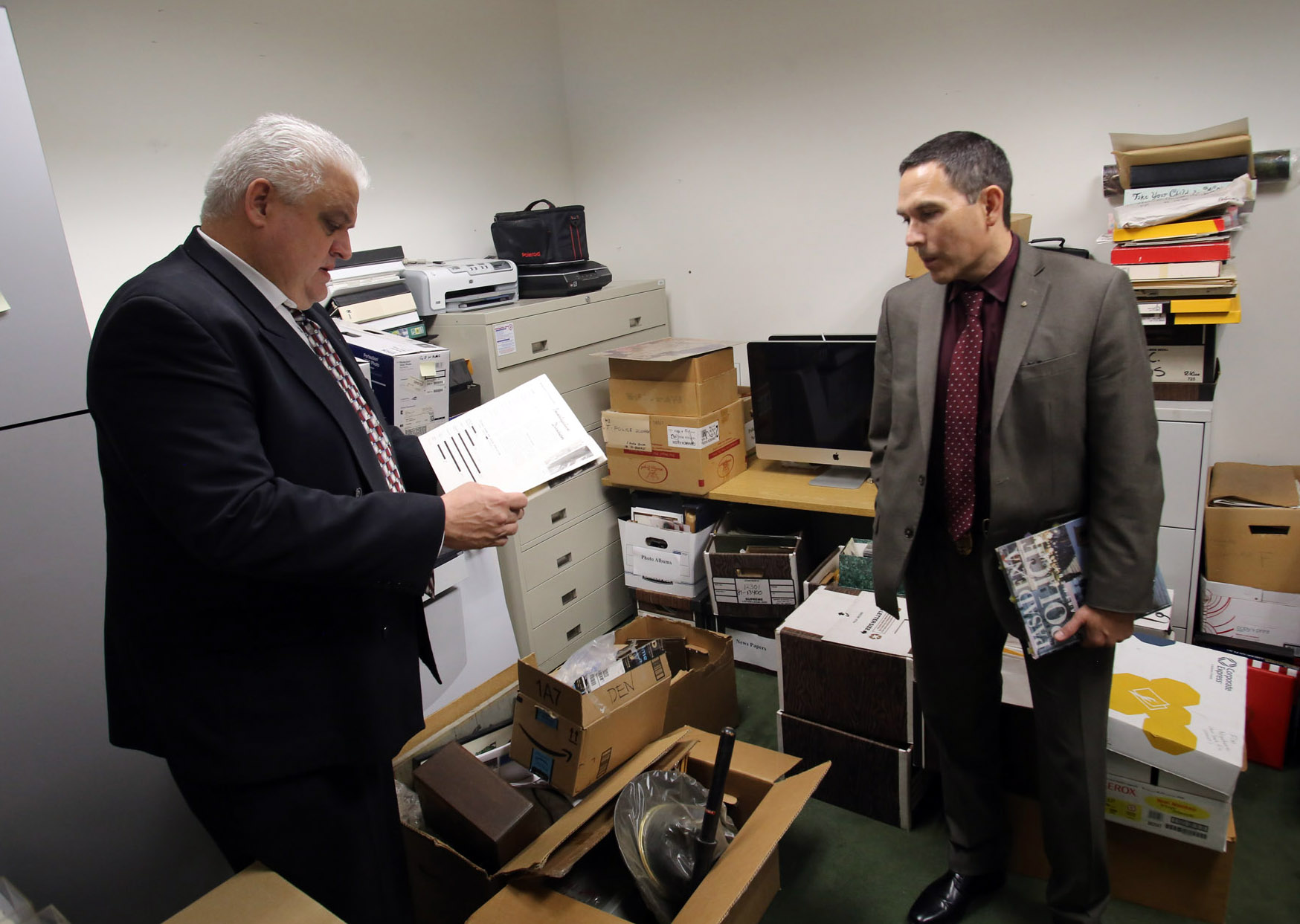
Lt. Jason Clawson, left, and Detective Victor Class look through decades of archives that will be used for the Pasadena Police Department museum. The officers are cited “our history means a lot to us.” /Photos by James Carbone
Cass and Clawson believe there is also a wealth of Pasadena PD history outside the walls of the department and hope to acquire artifacts from retired officers and their families. They also believe other agencies, such as the LA County District Attorney’s Office have items related to Pasadena PD history.
In the same way former Chief Melekian assigned Cass to write a Pasadena PD history book, current Chief Perez appointed Clawson as the main organizer for the future museum.
Some current Pasadena PD employees and the community as a whole have no conception of the department’s rich history, Perez said.
“To have a museum here would be fantastic,” Perez said. “It’s nice to leave behind, not our history, but the history, of the police department, for our people to not forget that.”
For example, Perez wants the community to know that Pasadena PD was one of forerunners of community policing concepts, was likely the first agency on the west coast to have radio systems in police vehicles and among the first to patrol from the sky using helicopters.
The museum can also provide the perfect setting for the department’s annual memorial honoring its fallen officers.
“As the world evolves and gets older, we forget about where we’ve been,” Perez said. “We have done some great things in this organization.”
 Behind the Badge
Behind the Badge
